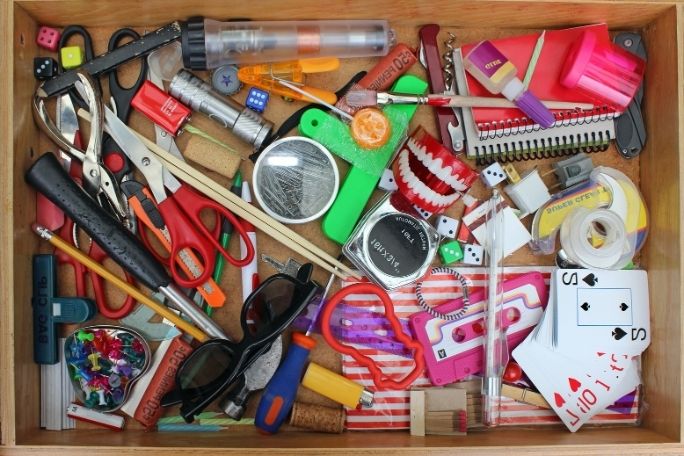Lesson summary
Students take part in an eco-design challenge to repurpose objects that were destined for recycling or landfill. The STEM focus is creating a ‘useful’ item out of ‘useless junk’. This lesson encourages your students to stretch their imaginations with endless potential design possibilities. Students will experience design in a hands-on way and be challenged to think quickly to boost innovative thinking.
Learning intentions:
Students will...
- develop and build a design object
- create a useful item from useless items
- understand the design process.
Success criteria:
Students can...
- work independently and collaboratively
- offer and apply a variety of solutions
- reflect on their learning over time
- think creatively.
Lesson guides and printables
Curriculum links
Select your curriculum from the options below.
Lesson details
Curriculum mapping
Australian curriculum content descriptions (v9):
Years 5 & 6 Design and Technologies:
- explain how people in design and technologies occupations consider competing factors including sustainability in the design of products, services and environments (AC9TDE6K01)
- investigate needs or opportunities for designing, and the materials, components, tools, equipment and processes needed to create designed solutions (AC9TDE6P01)
- generate, iterate and communicate design ideas, decisions and processes using technical terms and graphical representation techniques, including using digital tools (AC9TDE6P02)
Syllabus outcomes: ST3-13MW, ST3-5WT
General capabilities: Critical and creative thinking, Personal and social capability
Cross-curriculum priority: Sustainability
Relevant parts of Years 5 & 6 achievement standards:
Students explain how people design products, services and environments to meet the needs of communities, including sustainability. They select and justify design ideas and solutions against design criteria. Students share and communicate ideas or content to an audience using technical terms, graphical representation techniques and appropriate digital tools. They develop project plans, including production processes, and select technologies and techniques to safely produce designed or digital solutions.
Unit of work: STEM Challenges — Primary
Time required: 90 mins
Level of teacher scaffolding: Medium to High. Teachers are to set the experience and guide the children during the STEM session. The role of the teacher switches to a co-facilitator assisting groups in the design phase and asserting safe practices in the build phase.
Resources required
- a range of junk drawer items or items that can be repurposed or are intended for recycling
- Student Worksheets – one copy per student.
Skills
This lesson is designed to build students’ competencies in the following skills:
- adaptability
- collaboration
- communication
- creativity
- critical thinking
- problem solving
Additional info
This is an original Cool+ lesson.


Welcome back!
Don't have an account yet?
Log in with:
Create your free Cool.org account.
Many of our resources are free, with an option to upgrade to Cool+ for premium content.
Already have an account?
Sign up with:
By signing up you accept Cool.org's Terms and Conditions(Opens in new tab) and Privacy Policy(Opens in new tab).